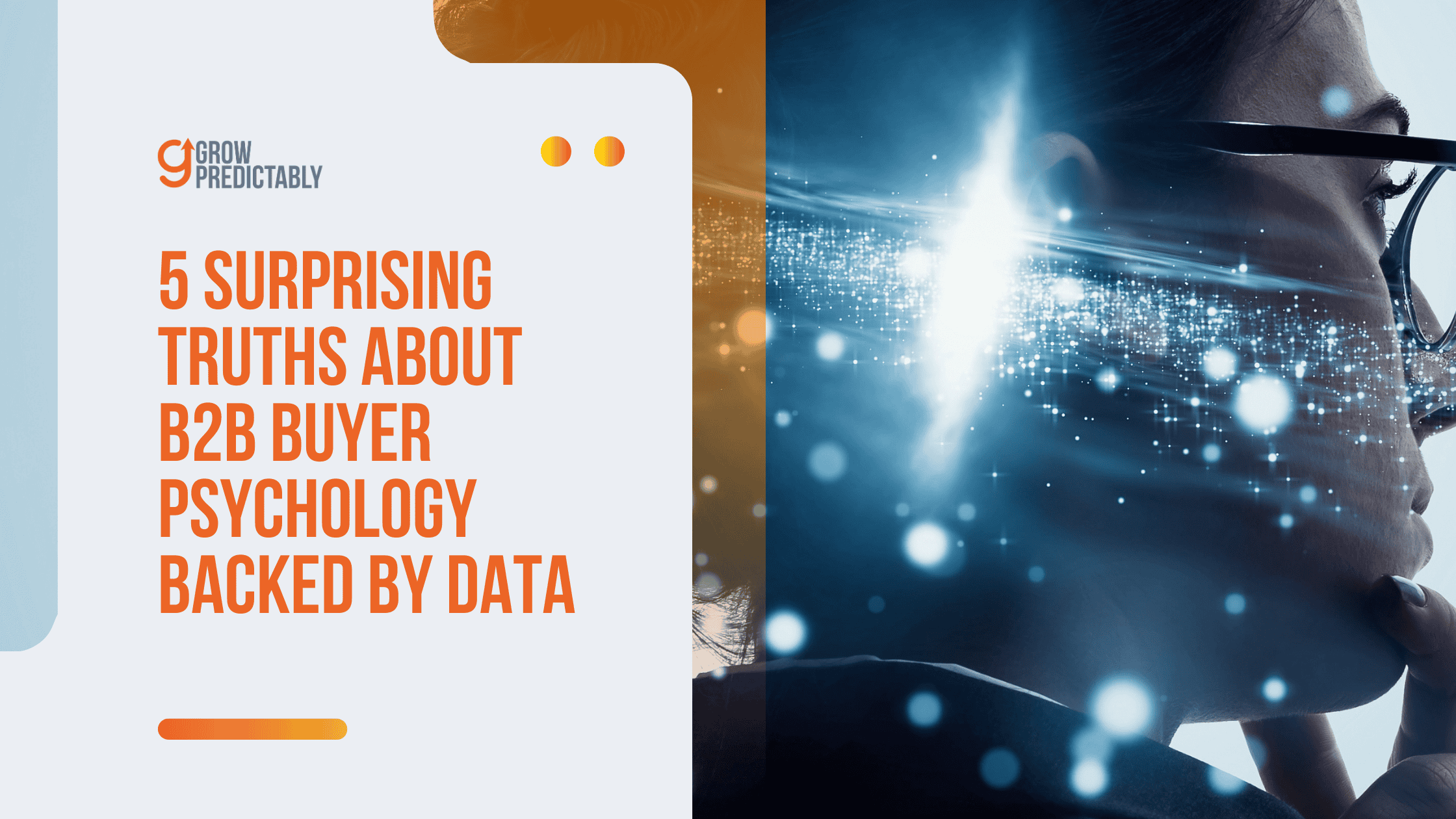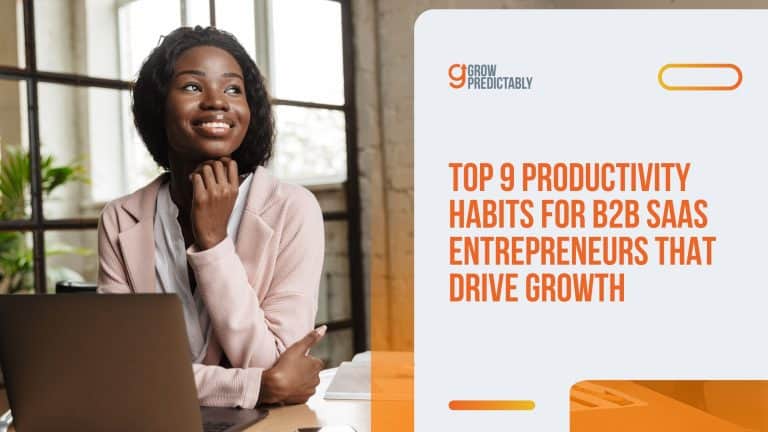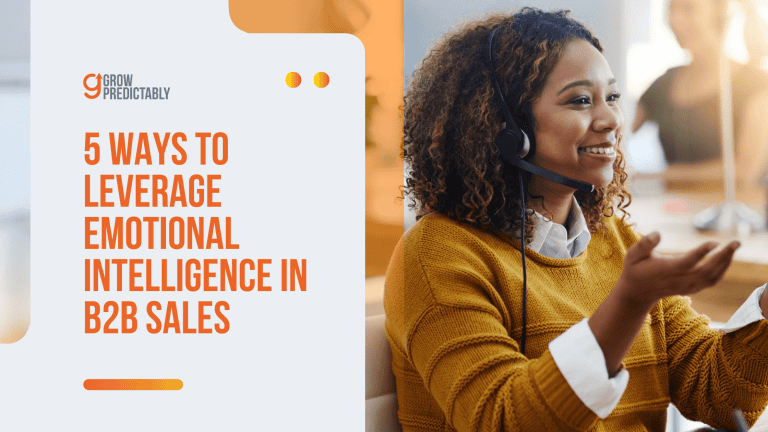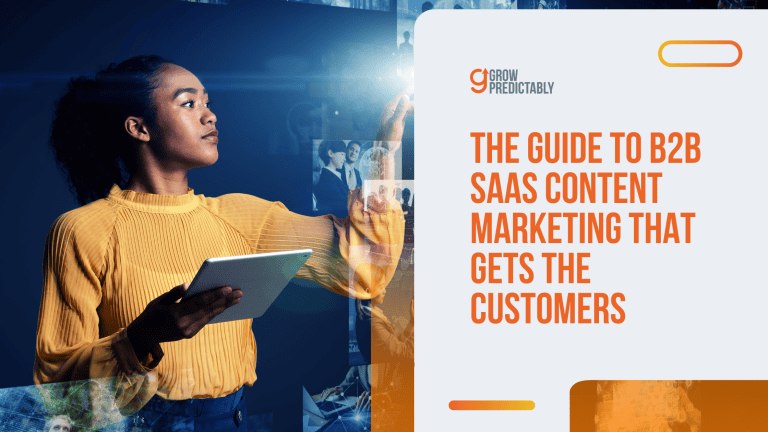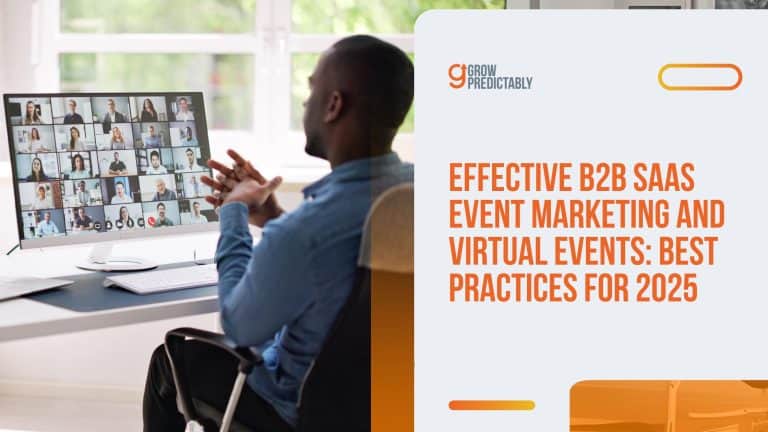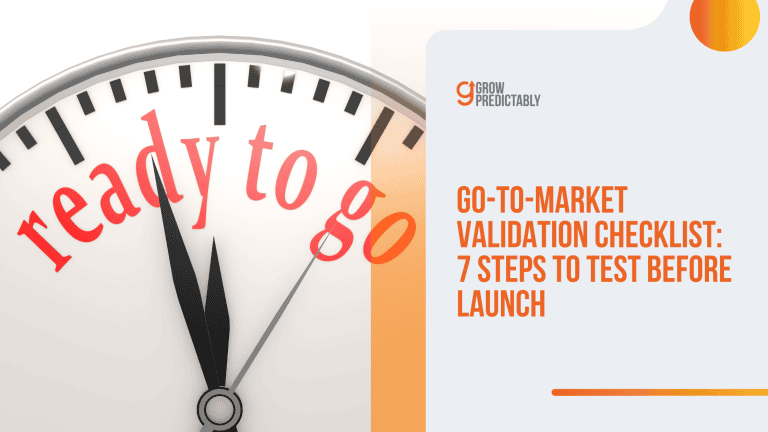5 Surprising Truths About B2B Buyer Psychology Backed by Data
B2B buyers don’t make decisions the way most people think they do.
They’re not spreadsheets in suits. They’re emotional, biased, and sometimes irrational—just like everyone else.
A Google study found that emotional connections were stronger in B2B than B2C purchases — 50% more, in fact. (Think With Google)
If you’re crafting B2B campaigns, appealing purely to your buyers’ logic isn’t the way.
This article breaks down five data-backed truths about B2B buyer psychology that serious marketers and sales teams can’t overlook.
One of them actually flips the cold, calculating B2B stereotype on its head.
Want to know what it is? Keep reading.
Surprising Truth #1: Emotional Drivers Dominate B2B Decision-Making
Think B2B buying is all spreadsheets and ROI calculations? Think again.
Thorough market research reveals that 86% of consumer buying choices are influenced by emotional needs, ranging from self-worth to social perception. (Source)
Yes, even in the buttoned-up world of B2B.
Drawing from my experience working with enterprise clients, the fear of making the wrong choice often paralyzes decision-makers more than any feature comparison chart.
Let’s break this down.
A 2021 source from Forbes shows that the typical B2B purchase now involves 6 -10 stakeholders. (Source)
These numbers mean more emotional baggage is driving the conversation for every B2B purchase.
- The IT Director fears system crashes and security breaches
- The CFO worries about budget overruns and wasted resources
- The Operations lead stresses over team adoption and workflow disruption
To tap into the emotional drivers of your buyers, you need a tool to help you map out all the factors that break down how emotions play into your buyers’ behavior.
Using the Customer Avatar Canvas

Let’s map these hidden emotional drivers:
Frustrations & Fears:
- Looking foolish in front of peers
- Making career-damaging decisions
- Being blamed for implementation failures
- Falling behind competitors
Wants & Aspirations:
- Recognition as an innovator
- Career advancement
- Being seen as a problem solver
- Leading successful transformations
From analyzing countless sales conversations, I’ve noticed something fascinating: when we address emotional drivers first, the logical discussions flow much more smoothly.
Logic might make people think, but emotions make them act.
Even in B2B, the heart often leads the head.
But here’s where it gets really interesting: even when you nail the emotional messaging that catches the genuine interest of each stakeholder, your efforts might still fall flat. Why?
Another invisible force is at work: Cognitive bias.
Surprising Truth #2: Cognitive Biases Outrank Logic in Vendor Selection
Imagine this scenario.
A CTO sits down to make what they believe is a purely rational software purchase.
They’ve got spreadsheets, ROI calculations, and feature comparisons.
Yet somehow, they end up choosing the vendor that “feels right” – even when the data suggests otherwise.
This isn’t a figment of your imagination.
A study from Think with Google reveals that most B2B decision-makers usually decide based on emotions, even while industry peers believe they’re making purely logical choices. (Source)
Let’s explore how to work with – not against – these natural biases.
The Anchoring Effect: Your First Price Sets the Stage
For example, when a SaaS brand launches its enterprise suite, not starting with the middle tier first would be a good move.
Lead with the premium package first. Why?
Because that first number becomes the reference point for all other pricing discussions.
But anchoring isn’t just about price.
During the “Awareness” stage of the Customer Value Journey, every piece of information you share becomes a reference point.
That first case study, that initial success metric – they stick in your prospect’s mind like glue.
Social Proof: We Trust What Others Trust
Here’s where it gets interesting.
According to a G2 Crowd and Heinz Marketing study, 92% of B2B buyers are more likely to purchase after reading trusted reviews. (Source)
But the crucial part is that this happens before they ever reach out to sales.
During the “Engage” and “Subscribe” stages, strategic placement of social proofs, like positive reviews, can trigger what I call the “trust cascade.”
Social proof triggers include:
- Industry logos (but only from relevant peers)
- Specific success metrics (real numbers, not vague claims)
- Video testimonials (showing real people, real success stories, real results)
An example of one SaaS brand that leverages sales collaterals or social proof pretty well on its homepage is the cold outreach tool Lemlist.
From industry logos to their users’ success stories in video form, a compelling homepage is what they have.

The Scarcity Trigger: Even CTOs Feel FOMO
Basecamp effectively utilized a scarcity-driven onboarding approach by limiting the number of new customer sign-ups at certain times.
This strategy created a sense of exclusivity and high demand for its project management software.
By restricting access, Basecamp enhanced the perceived value of its product, fostering a stronger desire among users to join.
This tactic contributed significantly to the platform’s adoption and engagement rates, demonstrating the psychological power of scarcity in marketing strategies.
During the “Convert” and “Excite” stages, consider these bias-aware strategies:
- Limited implementation slots
- Early adopter pricing windows
- Beta access to upcoming features
The Status Quo Bias: Your Biggest Hidden Enemy
Here’s where many deals die: People naturally resist change.
But you can flip this bias on its head during the “Ascend” stage by making the status quo seem riskier than changing.
Drawing from my knowledge of digital analytics, I’ve found that highlighting the cost of inaction – using real numbers and trend data – can cut through status quo bias faster than any feature list.
Remember this.
Your prospects aren’t purely logical machines – they’re human beings using mental shortcuts to navigate complex decisions.
By integrating sales psychology and understanding these biases, not against them, you’ll close deals faster and more predictably.
But wait – if bias controls perception, what controls connection?
That’s where emotional storytelling comes in.
Surprising Truth #3: Emotional Storytelling Converts More Than ROI Calculators
Picture this: A startup founder walks into two pitch meetings.
In the first, they showcase a detailed ROI calculator with impressive projections.
In the second, they tell a story about how their solution transformed a company just like the prospect’s.
The winning pitch? The story.
This isn’t just luck.
Storytelling boosts memory retention in branding and in different marketing messages, according to Forbes. (Source)
Why?
Behind every rational decision making process in business stands a human being with real fears and dreams.
Why Stories Work Better Than Spreadsheets
Let’s break down why stories work better than spreadsheets:
Stories Tap Into Hidden Fears
Think about your typical enterprise buyer’s pain points.
Sure, they care about ROI, but what keeps them up at night?
- Job security
- Career growth
- Looking smart in front of their boss
These emotional drivers show up clearly in the Customer Avatar Canvas under “Frustrations and Fears.”
Stories Paint a Better Tomorrow
Your buyers don’t just want personalized solutions – they want transformation.
The “Wants and Aspirations” section of our Canvas, shown earlier under truth #1, reveals what they’re really chasing: recognition as innovators, confidence in their decisions, and pride in moving their company forward.
Stories Make Complex Ideas Simple
Take IBM’s approach to selling cloud solutions.
Instead of drowning prospects in technical specs, they shared stories of companies facing familiar challenges.
Each story followed a simple pattern:
- The challenge: “We were drowning in data.”
- The turning point: “Then we found a better way.”
- The transformation: “Now we’re industry leaders.”
Crafting Your Own Winning Story
Want to craft your own winning story?
Start with this framework:
Before State:
- What frustrates your buyer now?
- What risks do they face?
- How do they feel stuck?
After State:
- What changes after using your solution?
- How does their life improve?
- What new opportunities open up?
Bridge the gap by showing how your solution guides them from problem to possibility.
To put structure in your marketing messages, also use this industry-proven technique that helps writers craft stories that highlight a brand’s value.

This technique includes a four-part framework to make effective stories:
- The Hero
- The Destination
- The Antagonist
- The Mentor
Using this framework gives you and content marketers a foundation to craft engaging customer-centric narratives without reinventing the wheel every time.
Next time you collect a customer testimonial, dig deeper than just results.
Ask about their journey, their doubts, and their moments of revelation.
These emotional details create stories that stick.
REMEMBER: Numbers tell, stories sell — even in B2B.
But even the best stories can hit roadblocks, too. Why?
Because there’s another force at play: Organizational inertia.
It sounds serious, and rightfully so if your goal is a B2B campaign that sells.
Surprising Truth #4: Organizational Power Dynamics Secretly Shape Your B2B Outcomes
Have you ever had a perfect solution hit a wall?
Your product checks every box, ROI looks fantastic, and your champion buyer loves it. Yet somehow, the deal stalls.
What gives?
Here’s one possible reason: Decision-making is wrapped in layers of hierarchy, office politics, and slow-moving processes.
Too many stakeholders and a complex decision-making process are often among the most common reasons that contribute to delays in B2B sales strategies. (Source)
Let’s break this down using real-world examples that can inform and optimize your sales and marketing efforts.
Startups vs. Enterprise Companies
In startups, you might get a quick “yes” from a founder who sees your value.
But in an enterprise?
Your champion could love your solution yet lack the authority to say “go.”
From my experience working with both Fortune 500 companies and startups, I’ve seen how org charts can make or break deals.
At Motorola, getting approval meant navigating through 4-5 layers of management.
However, at smaller companies, one conversation with the right person could close the deal.
Your success hinges on your deep understanding of these hidden power maps.
Here’s what to watch for:
1. Decision Models
- Consensus-driven: Everyone needs to agree (slower, needs broad buy-in)
- Top-down: C-suite has final say (faster, but harder to access)
- Committee-based: Formal buying groups (structured, needs multiple champions)
2. Role-Specific Priorities
- IT leads fear security risks
- Finance wants to prioritize cost savings
- Operations need smooth implementation
- Department heads want quick wins
So what does this mean?
If you’re in marketing:
- Build internal selling decks that your champion can share upward
- Create role-specific value props for each stakeholder
- Map the approval chain early
If you’re a founder:
- Adjust your pitch based on company size and structure
- Plan for longer sales cycles in larger orgs
- Build relationships at multiple levels
Your real competition often isn’t other vendors – it’s internal inertia and competing priorities.
But, whatever the outcome, as Patricia Fripp wisely said:
To build a long-term, successful enterprise, when you don’t close a sale, open a relationship.
Patricia Fripp, executive speech coach and sales presentation skills trainer
Even if a deal stalls, nurturing trust, rapport, and meaningful connections can pave the way for future opportunities.
Put simply, building relationships is a timeless strategy.
But here’s what’s really interesting: As teams evolve and technology accelerates, one factor is changing everything about how B2B buyers behave – and it’s not human.
More on that next…
Surprising Truth #5: AI and New Norms Are Rewriting B2B Buyer Psychology
Let me paint a picture for you.
A B2B buyer visits your website.
Within seconds, AI analyzes their behavior, predicts their needs, and personalizes their entire journey.
Does it sound like science fiction?
For many B2B brands today, this is the standard, and it’s transforming how B2B decisions get made.
The Power of AI-Powered Personalization
The numbers tell a fascinating story.
B2B Rocket’s findings reveal that companies using AI-powered personalization see their B2B lead conversions jump by 40%. (Source)
Why is this happening?
Because machines are becoming impressively adept at reading human behavior and responding to exactly what their buyers need.
Let’s break that down.
Early Journey Magic
When prospects first discover your brand, AI shapes their experience like a digital concierge to help encourage potential buyers.
Its goal? Identifying and addressing customer pain points at the outset.
The result? Lower churn rates because buyers find what they need faster, enhancing marketing efforts overall.
Think about Shopify’s approach – their system watches how people browse, then serves up product suggestions that feel almost telepathic.
The New Normal in B2B Buying
But here’s where it gets really interesting and where sales reps must adapt accordingly.
The way B2B teams buy has completely flipped:
- Remote buying groups are the new normal
- Self-serve research trumps sales calls
- Sustainability concerns influence decisions more than ever
These shifts change how buyers see value, trust, and urgency.
Take the ‘Subscribe’ stage of the Customer Value Journey – buyers now expect instant demos and self-guided tours.
During ‘Convert’ and ‘Ascend’ phases, they want proof points tailored to their exact situation.
The Future of B2B Buying
Looking ahead to 2025, get ready for:
- Zero-friction demos powered by generative AI
- Proposal builders that read your prospect’s mind
- Personalized content that evolves with each click
The Human Touch in AI

But don’t let all this tech talk fool you.
The real magic happens when you blend AI insights with a human touch.
Use automation to crunch data and spot patterns, but keep key moments personal, especially during ‘Advocate’ and ‘Promote’ stages, where relationships matter most.
I learned this firsthand by helping clients with AI tools.
The companies winning big don’t just automate – they use AI to understand emotions better, then add human warmth at crucial moments.
Now that you know psychology often overrides product, even in B2B, how can you put it all into play?
Here’s a blueprint for the sales reps…
How to Apply These Psychological Triggers to Win More Deals
Remember those five eye-opening truths we uncovered?
Let’s turn them into real-world wins for your business.
I’ve seen firsthand how combining emotional drivers with the right frameworks can transform B2B sales – and I’m excited to show you how.
Start With Your Buyer’s Inner World
Pull out your Customer Avatar Canvas and map each stakeholder’s emotional landscape:
- For the CFO: Fear of wasted budget, desire for career-defining wins
- For the IT Lead: Worry about implementation headaches, dream of being an innovator
- For the End Users: Frustration with current tools, hope for easier workdays
LinkedIn nailed this approach – they saw 30% higher engagement by matching content to each decision-maker’s deepest concerns.
Instead of just pushing features, they spoke of personal victories.
Match Psychology to Their Journey
Now, let’s connect those emotions to each stage of the Customer Value Journey:
- Awareness: Share stories that mirror their current pain points
- Engage: Use social proof from similar companies to build trust
- Subscribe: Offer value that addresses their specific fears
- Convert: Frame solutions around their career wins
- Excite: Celebrate their early victories to reinforce decisions
- Ascend: Show pathways to bigger professional success
- Advocate: Make them heroes in their organization
- Promote: Give them platforms to share their transformation
Role-Specific Action Steps
Here’s how different team members can put this into practice:
For Founders:
- Craft your origin story to connect emotionally with buyer champions
- Share your vision in ways that speak to their professional dreams
- Build trust through transparent leadership communication
For CMOs:
- Create content that addresses each stakeholder’s emotional triggers
- Design journey-specific messaging that builds confidence over time
- Test different story angles to find what resonates most deeply
For Account Executives:
- Open demos by acknowledging their specific challenges
- Use anchoring by showing premium solutions first
- Close with stories of similar companies’ successes
Your Next Steps
- Map your key stakeholders’ emotional drivers
- Create messaging that matches their journey stage
- Test and refine based on responses
Ready to put these insights into action?
Your buyers are waiting for someone who truly gets them – let that someone be you.
REMEMBER: Every B2B decision maker is human first, buyer second.
Speak to both sides of their brain, and you’ll w
in both their trust and their business.
FAQs
Lead With Empathy, Close With Confidence
So much of B2B success boils down to this: understand your buyer better than your competition does.
Across five truths, you’ve seen that people buy with emotion, justify with logic, and often wrestle with internal politics, biases, and shifting norms.
But here’s the empowering part: with the right psychological tools and empathetic sales and marketing strategies, you can connect on a level no ROI calculator ever will.
✅ Use the insight: Emotional storytelling, strategic bias framing, and AI-enhanced personalization are more than tactics – they’re the future of conversion.
What will your next outreach sound like now that you truly understand your buyer’s inner world?
Those who break through inertia and speak to hearts – not just minds – will shape the next era of B2B success.

